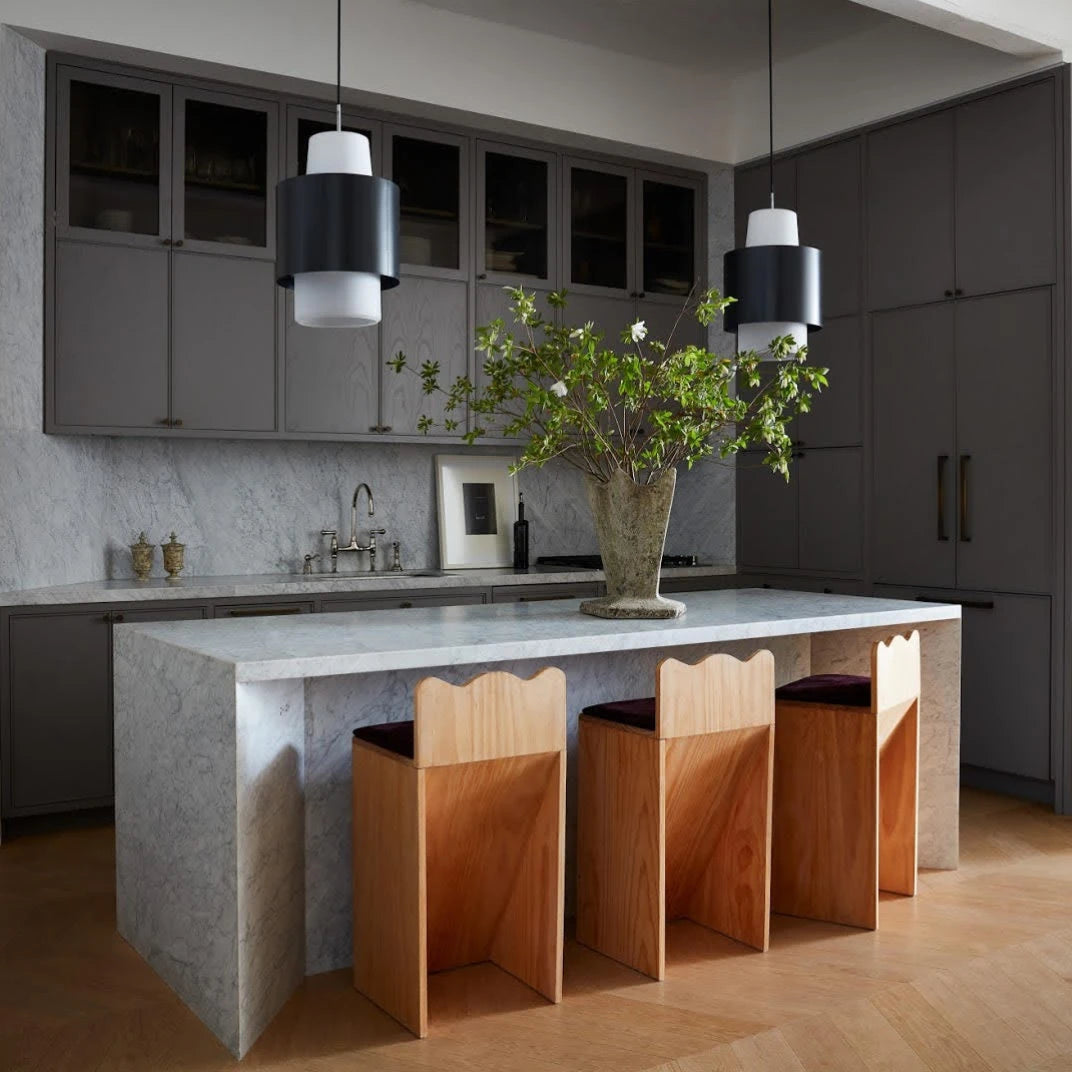
Choosing the Perfect Counter Stools
Kitchen counter stools are more than mere seating; they are pivotal elements in your kitchen's design and functionality. Whether you seek to create an inviting breakfast nook or add chic seating to your island, the selection of the right counter stools holds great importance. In this comprehensive guide, we will delve into the art of picking kitchen counter stools. From essential factors like height and style to materials and comfort, we aim to provide expert insights and tips to enhance both the aesthetics and functionality of your kitchen.
1. Counter Stool Height: The primary and most critical consideration when choosing kitchen counter stools is their height. Counter stools are available in various heights, and selecting the correct one is pivotal for comfortable seating.
Begin by measuring the distance from the floor to the top of your kitchen counter or island. Standard kitchen counters typically stand at 36 inches, while kitchen islands are often 42 inches high. To ensure a comfortable seating experience, opt for counter stools with a seat height that leaves approximately 9 to 13 inches of space between the top of the seat and the underside of the counter. This arrangement provides ample legroom and facilitates easy movement.
Selecting the wrong height can result in discomfort and disrupt the visual harmony of your kitchen. Thus, it is imperative to measure accurately before making your counter stool purchase.
2. Style and Aesthetics: Counter stools are available in a wide array of styles, ranging from traditional to contemporary, rustic to industrial. Your choice of style should seamlessly align with the overall design and decor of your kitchen.
For a timeless and classic look, consider wooden or upholstered counter stools with traditional detailing. If your kitchen boasts a modern and minimalist design, opt for sleek and clean-lined stools with metal or leather finishes. For a rustic or farmhouse-inspired kitchen, wooden stools with distressed finishes can add warmth and charm. Industrial-style kitchens can be complemented with metal or steel counter stools, creating a chic and urban ambiance.
3. Material Selection: The material of your counter stools plays a significant role in their aesthetics, durability, and maintenance. Your choice should reflect your personal taste and lifestyle.
Wooden counter stools bring a natural and warm appeal to your kitchen. They are versatile, available in various finishes, and can effortlessly match a range of decor styles. However, wooden stools may require periodic maintenance to retain their luster.
Metal counter stools, on the other hand, offer a sleek and modern look. They are durable, easy to clean, and particularly well-suited for contemporary kitchens. They often come in a variety of finishes, including chrome, brushed nickel, and matte black.
Upholstered counter stools provide comfort and style, making them an excellent choice for extended seating periods. They come in various fabric and color options, allowing you to customize them to match your kitchen decor. However, upholstery may require regular cleaning to prevent staining.
4. Backrest and Armrest Considerations: When choosing counter stools, think about whether you want stools with backrests and armrests or prefer backless options. Your decision should align with both comfort and space constraints in your kitchen.
Counter stools with backrests offer additional support and comfort, making them suitable for long meals or extended conversations. They also tend to provide a more formal and elegant look. However, they may require more space due to their size.
Backless counter stools are compact and can be tucked neatly under the counter, maximizing space efficiency. They provide a casual and minimalistic vibe, ideal for smaller kitchens or spaces with limited legroom.
Armrests can enhance comfort, but they might limit the stools' ability to fit snugly beneath the counter. Consider the trade-offs between comfort and space when deciding on stools with armrests.
5. Swivel and Footrest Options: Swivel counter stools offer flexibility and ease of movement, allowing users to turn and interact freely. This feature can be particularly useful in open-concept kitchens where the counter serves as a social hub. Swivel stools often come with or without backrests, providing options to suit your preferences.
Footrests are essential for ensuring comfort and proper posture when seated at a counter. Look for counter stools with well-placed footrests, as they help prevent leg fatigue and promote relaxation during meals or gatherings.
6. Color and Finish Coordination: The color and finish of your counter stools should harmonize with the existing color palette and materials in your kitchen. Consider the cabinetry, countertop, and flooring when selecting the stool's color and finish.
For a cohesive look, you can opt for stools that match or complement the dominant colors in your kitchen. Contrasting colors can be used to add visual interest and create focal points in your kitchen design.
7. Comfort and Cushioning: Comfort is paramount, especially if you anticipate spending extended periods seated at the counter. Consider counter stools with cushioned seats and backrests for added comfort. Upholstered stools with high-quality padding offer a plush seating experience.
However, keep in mind that comfort should not compromise durability and maintenance. Select upholstery materials that are easy to clean and resistant to stains, especially if your kitchen is a high-traffic area prone to spills and splatters.
8. Quantity and Spacing: Determining the number of counter stools you need and their spacing is essential for creating an inviting and functional seating arrangement. The available counter space and your family's needs will guide your decision.
Measure the length of your counter or island and calculate the spacing between each stool. Ideally, allow for about 6 to 8 inches of space between stools to ensure comfort and ease of movement. For smaller counters, consider backless stools or those with slim profiles to maximize space efficiency.
9. Mobility and Storage: If you value flexibility and mobility in your kitchen, consider counter stools with features like casters or lightweight construction. These stools can be easily moved around the kitchen to accommodate different activities or configurations.
Additionally, assess your storage needs. Some counter stools come with stackable or foldable designs, making them convenient to store when not in use. This is particularly useful if you have limited space or if you want to keep the kitchen area clutter-free.
10. Budget and Quality: Set a budget for your counter stools to guide your selection process. Counter stools come in a wide price range, from budget-friendly options to high-end designer pieces. While it's tempting to focus solely on cost, consider the long-term value of your investment.
Investing in higher-quality counter stools may cost more upfront but can lead to better durability, comfort, and aesthetics. Quality materials and craftsmanship ensure that your counter stools withstand daily use and maintain their appeal for years to come.
Conclusion: The selection of kitchen counter stools is a creative and functional decision that can greatly impact the look and feel of your kitchen. By carefully considering factors such as height, style, material, backrest and armrest options, swivel and footrest features, color coordination, comfort, quantity and spacing, mobility and storage, as well as budget and quality, you can curate a seating arrangement that enhances both the functionality and aesthetics of your kitchen. With the right counter stools, your kitchen becomes not just a place for cooking, but a welcoming and stylish space for dining, socializing, and creating cherished moments with family and friends.
